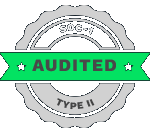MEAN Stack vs. LAMP stack. You might have come across these two terms especially if you’ve dealt with web or software developers. Yes, it is indeed important to know what they mean in the application development world.
According to Statista, by 2022, it is expected that the market for application development software would bring in US$149.70 billion.
For any eCommerce business, application development plays a significant role, and selecting the best development stack for their technological requirements is essential.
For decades, software engineers have been leaning more toward the LAMP server. However, every company has very unique requirements and with the new advancements and innovations in technology and web applications, this is changing.
The software developers use a very practical approach when it comes to selecting between the LAMP stack and the MEAN stack. Just like every part of the development process, they are way more open-minded about these technologies now. They select based on what the business truly needs and what will help in achieving the goals more effectively.
In this blog post, we'll define what a stack is, examine the key distinctions between the LAMP stack and MEAN stack, and depending on your organization’s goal, determine if you might need to shift from one to another.
What are Stacks: MEAN Stack and LAMP stack
Technology stacks, which are also often known as web stacks, are a group of layered technologies. Each of these plays a crucial part in the development of online applications.
- The majority of these layered technologies include an instrument for a front-end UI, a database, and a back-end web server.
- The web stack you choose for your development at the outset is vital. It determines the other gears your web developers can utilize and the kind of features that will be valuable for your application.
The MEAN and LAMP architecture are the most widely used technology stacks. Most developers rely on either of the stacks for the development process.
Let’s look at what MEAN stack and LAMP stack means.
LAMP stack:
LAMP architecture is a collection of interconnected software subsystems that work together to complete tasks independently of any other program or data.
The LAMP environment is the most dependable and powerful stage for creating enterprise-level applications.
It is a grouping of four software applications that enables seamless and ongoing integration.
LAMP Linux – Operating system
LAMP Apache – Webserver
LAMP MySQL – Data storage
LAMP PHP – Scripting language
This technology stack offers a great solution that encourages personalization, flexibility, and affordability.
The LAMP web server includes a wide range of tools, features, and collections that makes it much simpler for LAMP stack developer to construct online applications.
MEAN stack:
MEAN architecture is an advanced-level, open-source JavaScript stack that works well for creating vigorous apps and webpages.
It was in the year 2013 that Valeri Karpov created the acronym MEAN to refer to apps that were created by using an integration or blend of four technologies.
Each of these technologies complements the others effectively and offers special advantages to MEAN applications.
The major benefit of developing using the MEAN stack is that JavaScript is used throughout all levels, making it simpler to combine the various parts and enabling full-stack software development.
As you can see, both tech stacks are powerful in their own way. We will now examine the pros and cons of the LAMP stack and MEAN stack.
LAMP Stack vs. MEAN Stack: Pros and Cons
Let’s start by running through the advantages and disadvantages of the MEAN stack.
MEAN Stack
ProsEvery tool in this technology stack is open source.
This stack consists of a web app display layer for demos and real-time changes or upgrades.
It’s suitable for use with any operating system. This stack doesn’t define or command a specific OS.
Excellent functionality and results for SPAs
You can easily create, test, and launch cloud apps using MongoDB.
JavaScript is used by all gears in the MEAN stack. This enables and facilitates full-stack development.
It is recommended to not use this stack for larger apps because of the risk of data loss during heavy processes.
As each technology undergoes constant upgrades and modifications, maintenance can be burdensome.
It is challenging to integrate into current designs since some outdated programs or applications do not support JavaScript.
Now we will explore the benefits and drawbacks of the LAMP server.
LAMP Stack:
Pros
It comes with extensive support across the board for all technologies in the stack.
It is an entirely open-source LAMP web server.
The docker LAMP is perceived to be a mature stack that offers a lot of past fixes and personalization.
LAMP stack’s non-blocking structure facilitates scaling and expedites development.
LAMP PHP and MySQL are simple to understand, use and learn.
Cons
One of the core drawbacks is that it only supports the LAMP Linux operating system
It is predicted to see a long-term drop in popularity owing to the dominance of the cloud and JavaScript.
The cloud integration in the docker LAMP stack is poor.
It is challenging to transition between back-end and front-end tools with this LAMP architecture.
For the majority of development projects, MEAN or LAMP stacks are the best and most suitable frameworks available.
Now the question is how do you and your development team choose between the two? We will take you through all the factors you need to consider when selecting the right one for your project.
MEAN or LAMP Architecture: Which One is Better for Your Organization?
Here are a few crucial elements you need to answer when selecting the right technology stack for your project
What kind of application will your app developers create? Will it be a hybrid, progressive web app, on the cloud, etc.?
Will the app be dynamic and have frequent real-time updates?
What volume of traffic does your application need to manage? Are you expecting the traffic to flow steadily or in peaks?
What tools and technologies are present in the infrastructure? Are you planning to keep it uniform or diverse?
How much time will your team devote to the application's maintenance?
What is the anticipated lifespan of the web application?
What kind of retraining will your staff require?
It’s been established that MEAN stacks perform well for smaller-scale contemporary applications like single-page, cloud-based, or progressive web apps. For more complex applications that value uptime and accessibility, the LAMP architecture is preferred.
The lifespan is the most significant factor to take into account. Although the LAMP web server is well-established, popular, and robust, it is anticipated that MEAN's current and up-to-the-minute functionality would eventually replace it.
You will have a great app if you decide to build it on the LAMP stack, but you might eventually need to switch completely to MEAN.
However, choosing the right one still depends on the factors mentioned above, what your business requires, and ultimately what your goals are for the application.
Conclusion
Hence, keeping the benefits and drawbacks of both technology stacks in mind, it's important to remember that every business is different.
You should consider hiring an app development company to work on developing the web application. They can help you weigh the pros and cons of the technology stacks and help you
If you are keen on building a robust and dynamic web application, the simplest way to do that is to outsource app development services.
We are aware that each organization has specific goals, services, strategies for marketing, and expectations. Therefore, before you start developing an app, we suggest that you take into account all of the important factors, including the aim, goals, and processes.
BluEnt is an app development company that offers a wide range of solutions and services to assist you in creating a successful web application! Its app development services and expertise is at par with global standards.
Are you ready to create a striking application? Contact us now!



 How Much Does App Development Cost? A Budget Estimation Guide
How Much Does App Development Cost? A Budget Estimation Guide  Using Angular to Develop Mobile Apps Can Be a Game Changer for Your Business
Using Angular to Develop Mobile Apps Can Be a Game Changer for Your Business  Pros and Cons of the WooCommerce Plugin for Online Merchants
Pros and Cons of the WooCommerce Plugin for Online Merchants  Why You Need Cross-Platform App Development to Increase Sales
Why You Need Cross-Platform App Development to Increase Sales 
